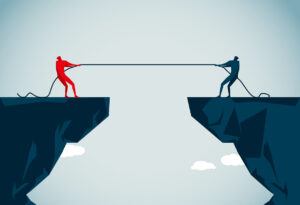How and why to add emotion to your event run of show
The PR company behind luxury brands’ biggest events weighs in.

So you’re having a PR event. Maybe it’s a press conference, maybe it’s a grand gala, maybe it’s a simple tour of your office.
You’ve planned out every aspect of the event: the itinerary, the talking points, the food, the timing.
But have you mapped out the emotional beats of the event? Probably not.
If not, you may be missing out on an opportunity to make the event memorable and meaningful.
The Exclamation Group specializes in luxury and corporate events. Think high-end events for brands like Bulgari, Swarovski and Exxon Mobil.
Founders Thomas Serrano and Anastasia Nisenbaum sat down with PR Daily recently to discuss how to create experiences that resonate in attendees’ minds while giving great value to the brands they support.
Memorable and meaningful
There is a certain irrationality to luxury goods.
Why choose this watch over that or this purse instead of that clutch?
Many times, it comes down to the emotional connection the brand has forged with the customer, as much as the item itself.
Serrano describes balancing the rational and the emotional as the “two Ms”: meaningful and memorable.
“It has to be meaningful to the brand, very unique to who they are,” he said. “And meaningful to the audience. Would they join?”
Then comes the memorable.
“Our product is that of craftsmanship, storytelling. Those companies are, you know, 100 years old, 200 years old, the products are beautiful. We connect through art, music, cinema, whatever. So, the emotion, it’s coming from those specific moments.”
But even for those of us who aren’t in the business of selling diamonds and expensive liquor, there are still emotional moments to be found. Serrano recalls an instance way back in 1999 where he worked on an event for HP servers.
A special exhibit was staged in Paris celebrating the year 2000 — a topic on everyone’s mind at the time that was sure to pique curiosity and interest in technology. And naturally, after those emotions had been aroused, then came the mandatory sales pitch.
It worked, Serrano said, because “what we created, they could not duplicate somewhere else.”
It all comes down to the very fundamentals of PR. As Nisenbaum explained: “We understand the audience. That’s the first thing that we need to work on. And what’s the goal of the client? That those are the first two key components that unless we know them, it’s just a matter of luck, whether we will hit it or not.”
Mapping emotions
Most event planners create a run of show document that painstakingly details the timeline of the event, from doors open to teardown. It features timing, locations, personnel, scripts and so on.
But Exclamation Group adds a unique column: one for emotion on both an individual and collective level.
“We try to describe the emotion as much as we can, and we try to describe the intensity of that emotion,” Serrano explained. In most cases, the emotions build, one upon the other, until you reach the crescendo of the evening.
For example, maybe you start with a video. Because people are watching it together, that’s a collective moment, and the video is intended to trigger nostalgia. Perhaps after that people enter an exhibit that triggers individual astonishment due to the beautiful jewelry displayed there. They wander, having a passive, individual moment of awe. Then perhaps a more active presentation by a watchmaker triggers curiosity.
“And after, you have to look back at the entire journey that you have just ended. You make sure you are going back to your audience, is it relevant to them, it’s relevant to the brands with the messaging,” Serrano said.
Nisenbaum pointed out that emotions can be complex and sometimes will need multiple elements to work. For instance, perhaps a certain soundtrack is playing during the jewelry exhibit to reinforce the desired emotion.
It’s also important not to keep emotions too high for too long, Serrano cautions.
“We’re not a machine of emotion … So, there are moments of serenity, there is a moment of pure pleasure and gastronomy.”
In the crowded luxury marketplace, generating emotions that linger with guests long beyond the day itself can make all the difference.
“There are millions of events happening throughout the year everywhere,” Nisenbaum said. “What’s the difference? Why would the guests come for this particular event?
Tracking the journey
But how can you measure an event like this? No one wants to interrupt their posh evening to take a survey asking about their feelings, after all.
Usually, the bottom line tells the story. Did sales at the event increase? Then the emotional journey was probably successful.
But there is, of course, a long-term, intangible emotional investment that needs quantifying, too.
“You see it in the face, if it works, or if it doesn’t work,” Nisenbaum said. “And of course, there will be one person who doesn’t get it. But if you see that the majority of them start taking their phones out under one minute of the performance or the speech, you know that it’s not working well.“
Allison Carter is executive editor of PR Daily. Follow her on Twitter or LinkedIn.







